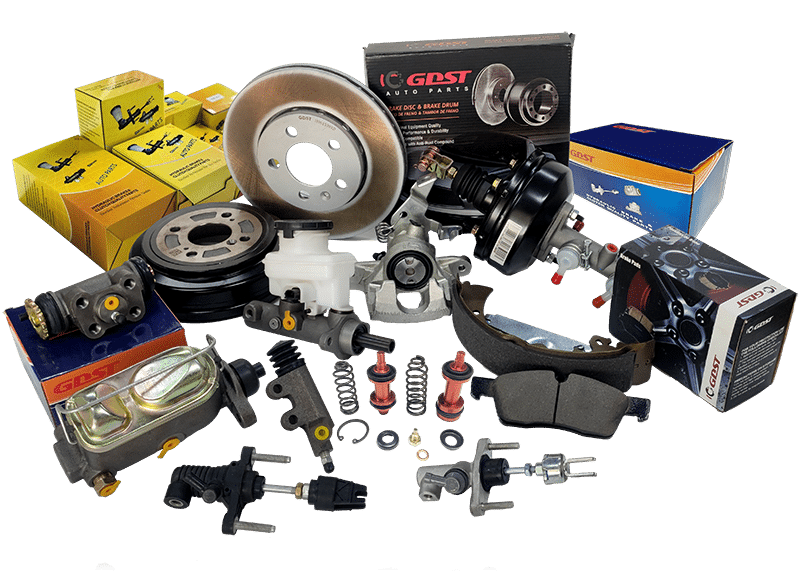Brake discs are one of the most critical components of your vehicle’s braking system. Over time, they wear out due to heat, friction, and general use. Ignoring worn brake discs can lead to longer stopping distances, vibrations, and even complete brake failure. In this article, we’ll go over the key symptoms of worn brake discs, how to check for wear, and when to replace them.
What Are the Symptoms of Worn Brake Discs?
Worn brake discs don’t fail overnight. Instead, they gradually lose effectiveness and show warning signs before becoming a serious safety issue. Here are the most common symptoms to watch for:
Steering Wheel or Brake Pedal Vibrations
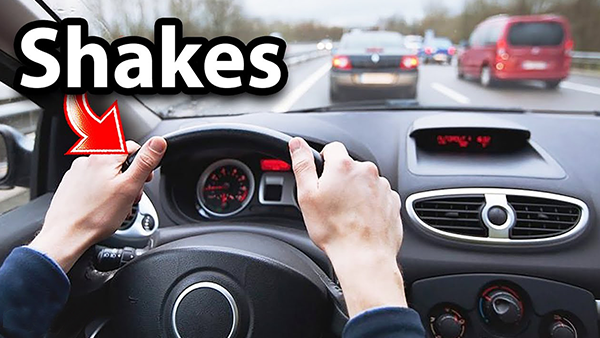
What it feels like:
The steering wheel shakes or pulses when braking.
The brake pedal feels wobbly or pulsates, especially when slowing down at high speeds.
Possible cause:
The brake disc has become warped or unevenly worn due to excessive heat buildup.
Uneven surfaces prevent smooth contact with the brake pads, leading to vibrations.
Solution:
Minor warping? → Resurfacing (machining) may fix it.
Severe warping? → Replacement is necessary.
High-pitched squealing or Grinding Noises While Braking
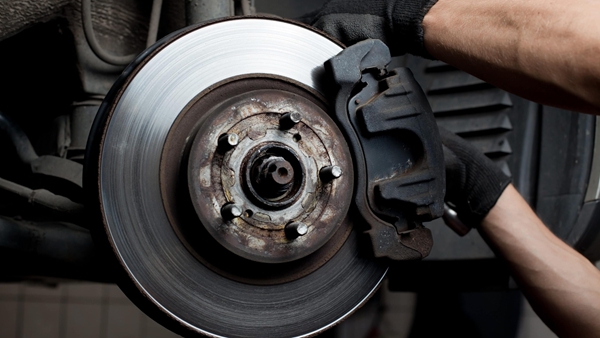
What it sounds like:
A sharp squealing noise when pressing the brake pedal.
A grinding or scraping sound, especially at low speeds.
Possible cause:
The brake pad wear indicator rubbed against the brake disc, prompting replacement.
If left unchecked, the brake pads can wear down completely, exposing the metal backing and grinding against the disc.
Solution:
Squealing noise? → Check brake pads and replace them if necessary.
Grinding noise? → Inspect the brake discs—if they are heavily worn, they need to be replaced.
Reduced Braking Performance (Takes Longer to Stop)
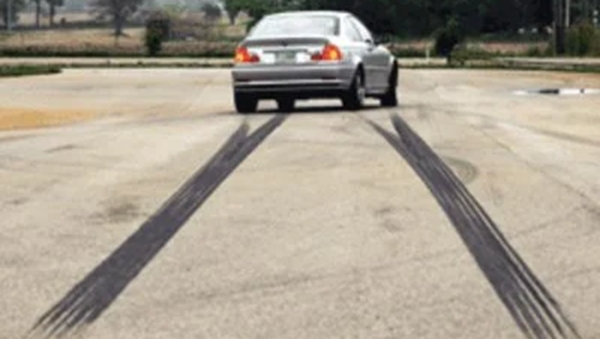
What it feels like:
You have to press the brake pedal harder to slow down.
The car takes longer than usual to come to a complete stop.
In wet conditions, the brakes feel less responsive or less effective.
Possible cause:
The brake discs have become too thin, reducing friction with the brake pads.
The surface may be too smooth or worn, making it harder to stop the vehicle.
Solution:
If the brake pads are fine but the braking is weak, the discs may be too thin and need replacing.
Check your vehicle’s manufacturer guidelines for the minimum brake disc thickness.
Visible Wear: Scratches, Rust, or a Thinner Brake Disc
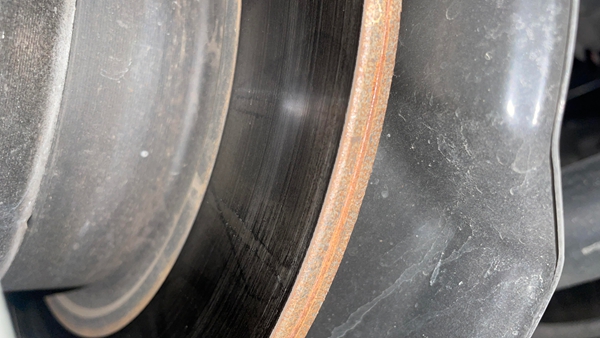
What to look for:
Deep grooves, cracks, or rough patches on the disc surface.
Rust buildup or blue discoloration, indicating overheating.
The disc edges appear thinner than a new brake disc.
Possible cause:
Over time, friction wears down the brake disc, causing grooves and scratches.
Heat buildup can change the disc’s structure, reducing braking efficiency.
Solution:
Minor surface damage? → The disc may be machined (resurfaced).
Severe thinning or deep grooves? → Replacement is the only safe option.
Clicking or Knocking Noises When Braking
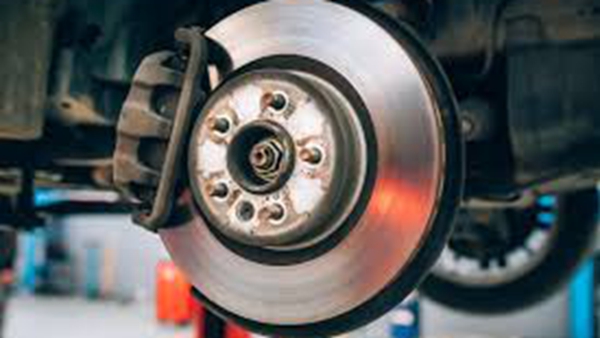
What it sounds like:
A rhythmic clicking, knocking, or rattling noise while braking.
The brake system feels unstable or inconsistent.
Possible cause:
Loose brake disc mounting bolts, causing the disc to shift when braking.
A cracked or broken disc, leading to uneven pressure and noise.
Solution:
Tighten loose bolts to secure the brake disc.
If the disc is cracked or broken, replace it immediately.
What Do Worn Brake Discs Look Like?
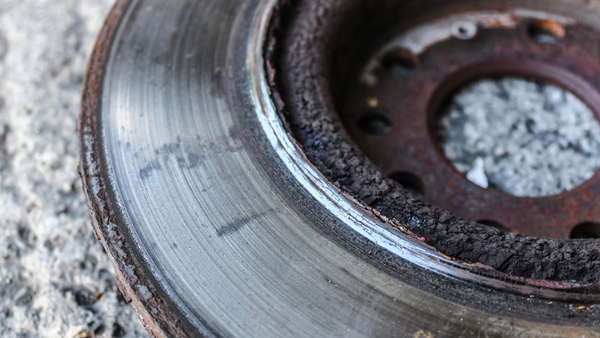
1. Look Through the Wheel Spokes
- A healthy disc should be smooth and even.
- A worn disc will have deep grooves, rust spots, or discoloration.
2. Check for Blue or Black Spots
- Blue spots = Overheating (caused by excessive braking).
- Black spots = Burnt brake material, reducing braking efficiency.
- If your discs look rough, grooved, or too thin, it’s time to replace them.
When Should You Replace Your Brake Discs?
Replace your brake discs if:
- They are thinner than the manufacturer’s recommended limit.
- They have deep grooves, cracks, or excessive rust.
- You feel pulsations, and vibrations, or hear grinding noises while braking.
How long do brake discs last?
- Most brake discs last 30,000 – 70,000 miles (50,000 – 110,000 km), depending on driving habits and conditions.
- Heavy braking, towing, or frequent stop-and-go driving can shorten their lifespan.
If you need brake discs at a good price, check out this GDST website, which will give you the best help!



